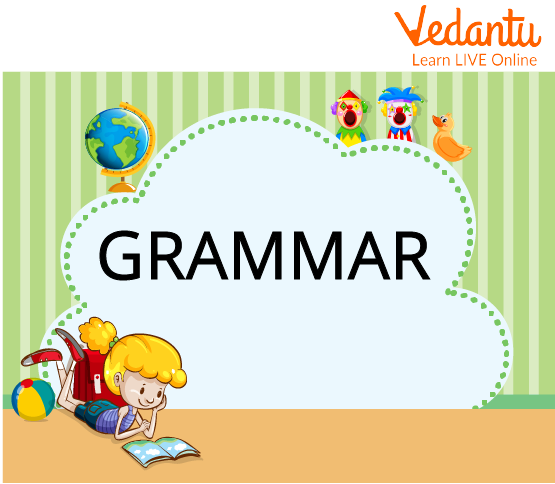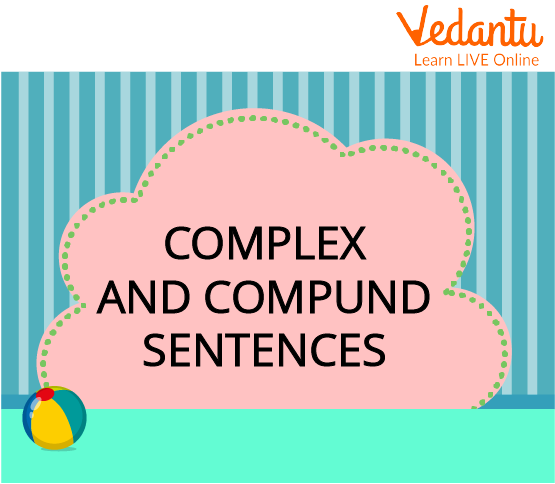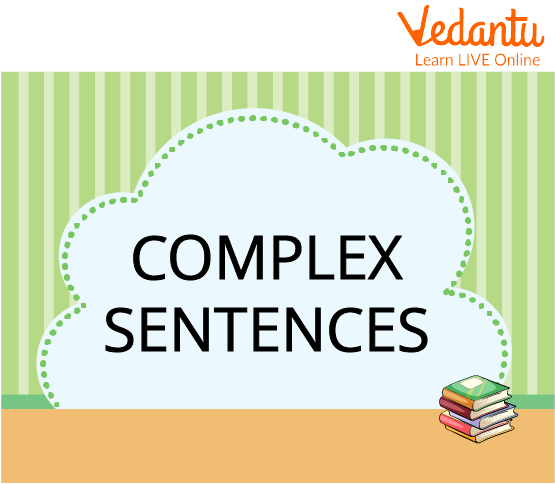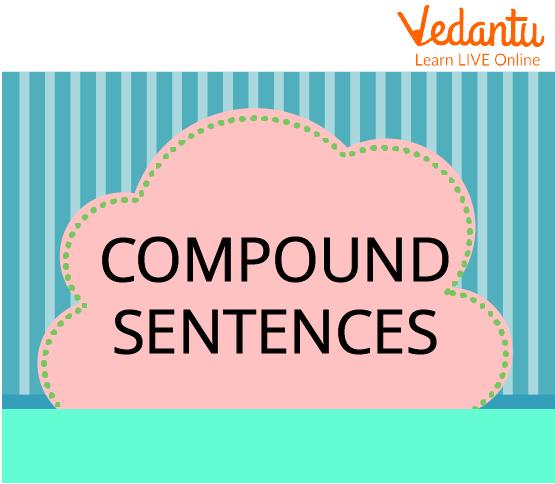English Grammar Clauses and Complex Sentences for Class 8 – Download Free PDFs with Solutions
In simple words, we can define a compound sentence as a sentence that is constitutive of two or more independent clauses. An independent clause is a clause that expresses a complete idea or thought. For example, he cried. In a compound sentence, the clauses are interlinked together by a coordinating conjunction such as ‘they,’ ‘for,’ ‘you,’ ‘and,’ etc. On the other hand, a complex sentence is made up of one independent clause and one or more dependent clauses connected to it. In complex sentences, the clauses are connected by subordinating conjunctions such as ‘until,’ ‘because,’ ‘while,’ and so forth.
Learning about clauses and complex sentences for Class 8 students is an essential part of their syllabus. Having a firm grasp on the type of sentences enables young minds to improve their essay writing abilities, answer formation tactics, and make them more confident while communicating. In today’s day and age of ruthless competition, it is vital for a child to transcend beyond their school textbooks and exercises. As such, parents and teachers should provide growing children with additional help via sample papers, test papers, revision notes, and so forth.
English Grammar for Class 8 Complex and Compound Sentences Download Free PDF
In today’s lesson, we will discuss complex and compound sentences. A complex sentence usually defines a sentence that consists of one main clause in which there are lodged with one or more subordinate clauses. A sentence that consists of two or more main clauses is referred to as a compound sentence. Coordinating conjunctions link the clauses in these sentences to form a compound sentence. These sentences are solely connected by conjunctions and no connectives directly exist between them. Coordinating conjunctions that join the clauses are “yet” or “but” and “for” or conjunctive adverbs like “nevertheless” and “however”. Practice questions and solved examples are given throughout the article for better understanding and concept clarity. Let’s begin the journey on this amazing topic.

Introduction to Grammar
Complex and Compound Sentences

Complex and Compound Sentences
Complex Sentences | Compound Sentences |
Complex sentences are composed of an independent and a dependent clause. | Compound sentences are formed by the combination of two or more independent clauses. |
The subordinating conjunction is preceded by the dependent clause. | The coordinating conjunctions or a conjunctive adverb adjoin the clauses in a compound sentence. |
A comma is required at the end of the dependent clause when a complex sentence begins with a subordinator. | Coordinators are always preceded by a comma except for short sentences. |
The conjunctions include because, after, before, since, when, although, whenever, and while. | The conjunctions include for, and, nor, but, or, and yet. |
Example: They didn’t go to the zoo because they went to the theme park. | Example: They went to the theme park but not the zoo. |
Complex Sentences: Meaning and Examples

Complex Sentences
An independent clause joined by one or more dependent clauses constitutes a complex sentence.
Subordinators such as because, since, after, although, or when or a relative pronoun such as that, who, or which are present in these sentences.
The following are a few examples:
The students submitted the homework after the teacher opened the link.
The teacher was stressed because of a personal emergency.
Mary and Marina went to the movies after they finished studying.
Things to Keep in Mind
A comma is required at the end of the dependent clause when a complex sentence begins with a subordinator.
No comma is necessary if the independent clause begins the sentence with subordinators in the middle.
Compound Sentences: Meaning and Examples

Compound Sentences
Two independent clauses are joined by a coordinator in a compound sentence.
For, and, nor, but, or, yet, so are a few examples of coordinators.
Coordinators are always preceded by a comma except for short sentences.
A Few examples of compound sentences are given below:
I tried to bake cookies and my friend tried to bake a cake.
Raju played football, so Mary went shopping.
Compound-Complex sentence
When a sentence contains at least three clauses among which two are independent clauses and one or more dependent clauses, which equates to three sets of subjects and verbs make up a compound-complex sentence.
This is a combination of a compound sentence along with a complex sentence.
Coordinating conjunctions typically join a compound-complex sentence.
The comma is placed immediately before the coordinating conjunction.
The following are examples of compound-complex sentences:
The dog ran away, but nobody was worried because she was trained to find her home.
Since he was a vegetarian, he refused to eat meat, but he was more than happy to eat yams.
Rules to follow in Writing a Compound-Complex Sentence
To frame a compound-complex sentence, the following steps are to be followed:
Choose the Main Clauses- Compound-complex sentence structure includes two independent clauses. The independent clauses should contain a subject and a verb phrase that direct them to stand on their own. “I’m going to the hotel” and “I need to grab my phone” are two examples of simple sentences that are also independent clauses.
Choose the Dependent Clauses- Attaching a dependent clause to your sentence turns it from a compound sentence becomes a compound-complex sentence when a dependent clause is attached to your sentence. Modifying the independent clause “I need to grab my phone” with the dependent adverbial clause “before I go” will turn one of the clauses into a complex sentence.
Join the Clauses with Conjunctions- Connectors such as “for,” “yet,” “and,” and “but” help link the main clauses together. “I’m going to the hotel but I need to grab my phone before I leave.”
Add Punctuations- A comma precedes the coordinating conjunction. In this given example, the coordinating conjunction is “but”, before which a comma is added to make the final sentence “I am going to the hotel, but I need to grab my phone before I leave.” If the phrase starts with a dependent clause, the comma should come right after the clause.
Difficult Words with Meanings
Word | Meaning |
Lodged | Embedded |
Refuse | Reject |
Clarity | Clearness |
Practice Questions
Identify the given sentences as complex and compound sentences
The traveler captain lost her map, but she still found the destination.
Because the food was too cold, he warmed it in the oven.
The student didn’t go to school but went to the library.
I will start a new course, if I get break from this job.
There was heavy traffic in the city, so I used the GPS to find a quicker path and was able to get there on time.
Answers
Compound sentence.
Complex sentence.
Compound sentence.
Complex sentence.
Compound-complex sentence.
Summary
You have a great degree of flexibility when writing compound-complex sentences to describe how, why, or when something occurred. To properly punctuate the sentence and prevent producing run-on sentences, it's critical to recognise which clauses are independent and which are dependent. Sentences with more elements and a longer, more complex thinking can be expressed using compound-complex sentences. They are useful tools for expressing lengthy chains of events or for clarifying complex concepts.
Importance of Learning Complex and Compound Sentences in CBSE for Class 8 Students
Exercises on clauses and complex sentences for Class 8 students should be a regular part of their learning schedule as they carry a lot of weightage, and students will require them even later in life.
Learning about complex and compound sentences is the first stepping stone towards an advanced level of English.
Complex sentences enable young minds to freely express themselves as they can mimic the complicated thinking required to understand certain kinds of ideas.
Thirdly, clauses and complex sentence exercises allow students to gather choppy and rudimentary statements and transform them into graceful, longer, and yet graspable sentences.
Likewise, it is essential that Class 8 students are aware of compound sentences and their rules as they help students to aptly express the relationship between ideas.
Important Topics of Complex and Compound Sentences in CBSE for Class 8 Students
The clauses and complex sentences Class 8 exercises should encompass the following topics:
Understanding Complex Sentences
Understanding Compound Sentences
Difference between Complex and Compound Sentences
What is an Independent Clause?
What is a Dependent Clause?
Grammar Rules of Structuring a Complex, and a Compound Sentence
Examples of Complex and Compound Sentences
We waited for two hours, but the train did not arrive. (compound sentence)
He was shocked when I told him that I was quitting my job (an example of a complex sentence with dependent and independent clauses).
When I gifted her the present, she was filled with tears of joy (complex sentence)
My mother prepared the meals while I helped with the chores (compound sentence)
Interesting Facts about Complex and Compound Sentences
Complex sentences are used to show a particular kind of relationship, wherein a strong idea is joined to a weaker idea.
Complex sentences can begin with an independent clause or a dependent clause and the choice is upon the writer.
Compound sentences are used to show the equality of ideas.
At times, using a semicolon instead of a conjunction can add more sophistication and variety to compound or complex sentences.
As such, combining interesting facts with clauses and complex sentences Class 8 exercises is a great way to make learning more fun and interesting.
Benefits of Learning Complex and Compound Sentences with Vedantu’s PDFs
The subject matter experts of Vedantu have curated PDFs that help expand the horizons of young minds and allow them to excel in academics. The PDFs have exercises, test papers, and revision notes on complex structures, independent, and dependent clauses.
Students can access Vedantu’s PDFs through phones or desktops
The content of the PDFs is regularly updated by Vedantu’s subject matter experts
The PDFs are equipped with exercises that make scoring good marks in examinations pretty easy.
The PDFs are prepared by keeping in mind the latest CBSE curriculum.
Conclusion
With Vedantu’s PDFs, make learning fun, exciting, and invigorating. The academic study material contained in the PDFs will help you improve your English and become a linguistic stalwart.
FAQs on English Grammar Class 8 Complex and Compound Sentences - PDF
1. What is a coordinating conjunction?
A coordinating conjunction is used between clauses of equal rank. They are used in complex sentences.
2. What is subordinate conjunction?
A subordinating conjunction introduces a subordinating clause and is a part of compound sentences.
3. What is the main difference between a complex sentence and a compound sentence?
The main difference between a complex sentence and a compound sentence is that the former has one independent clause and at least one or more dependent clauses, and the latter is made of multiple independent clauses and no dependent clauses.










